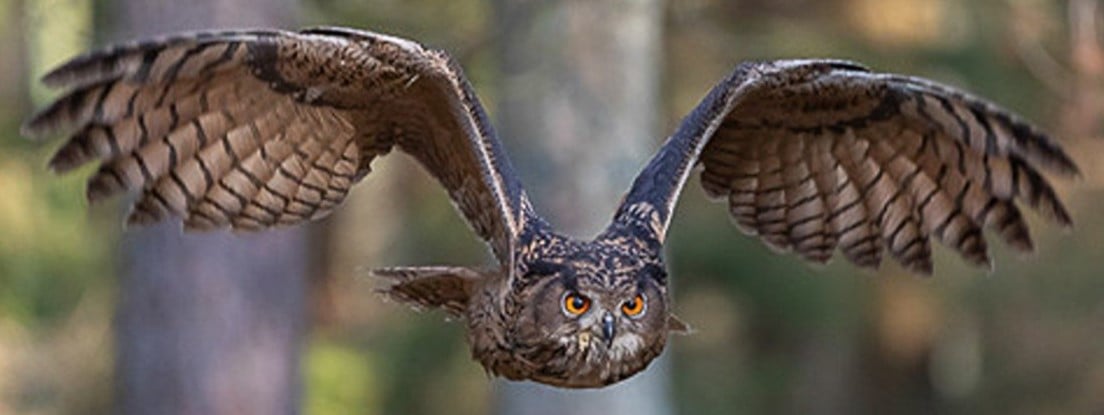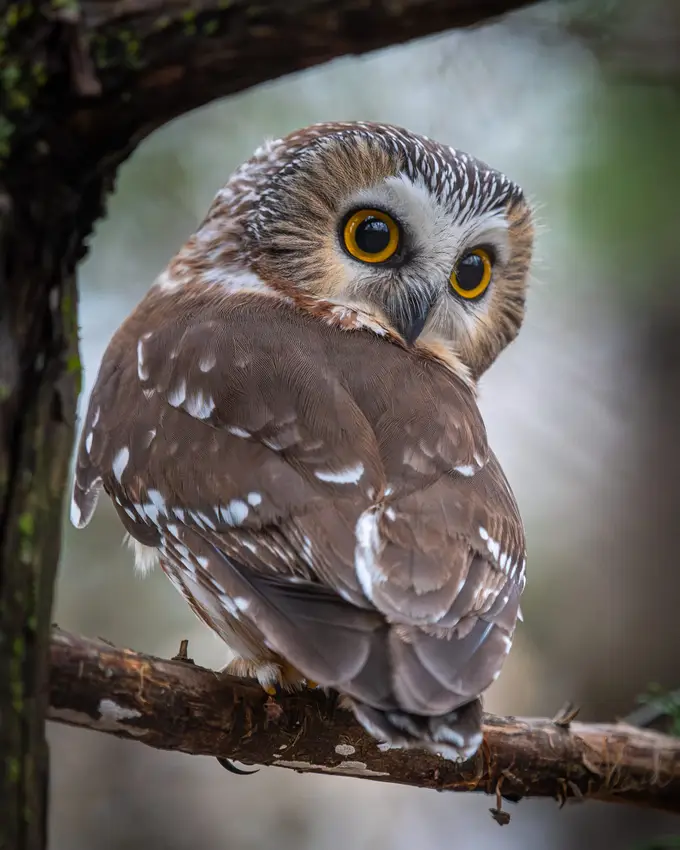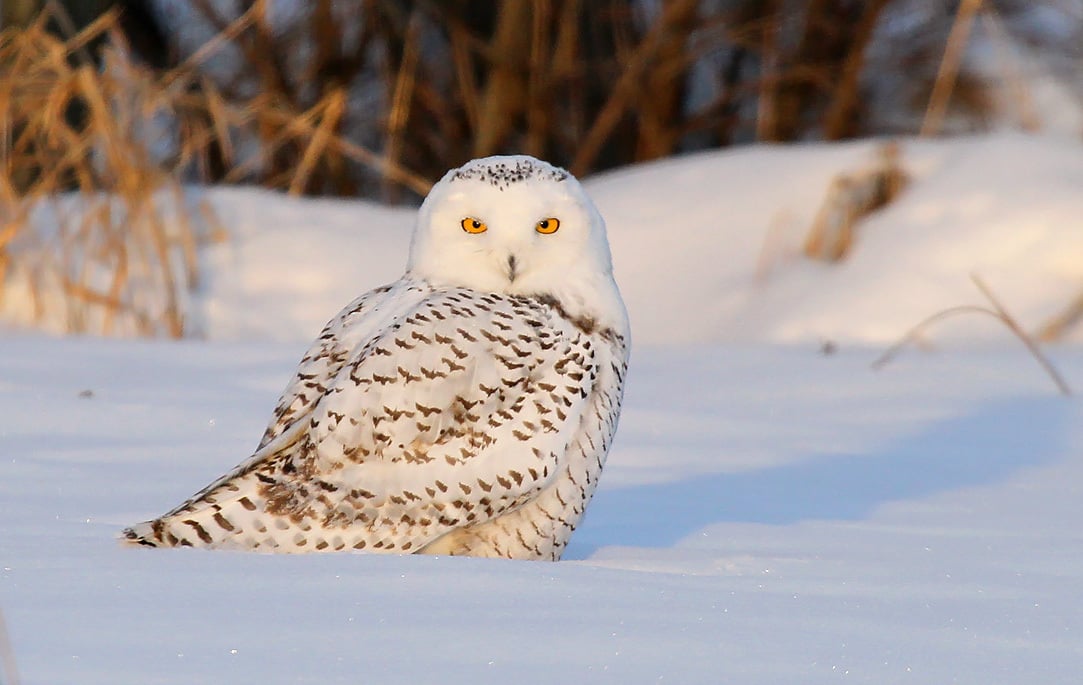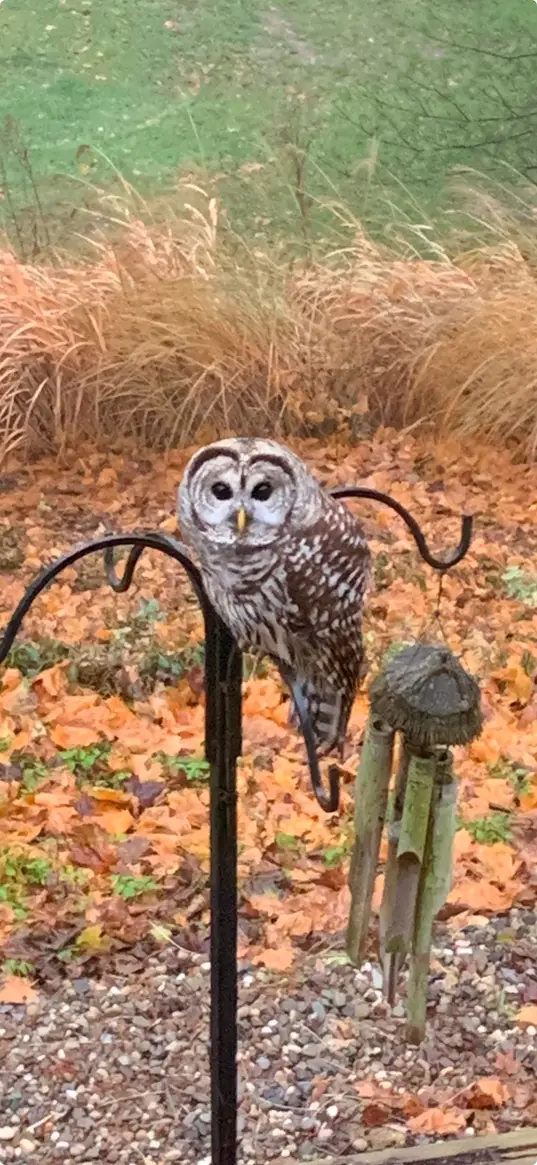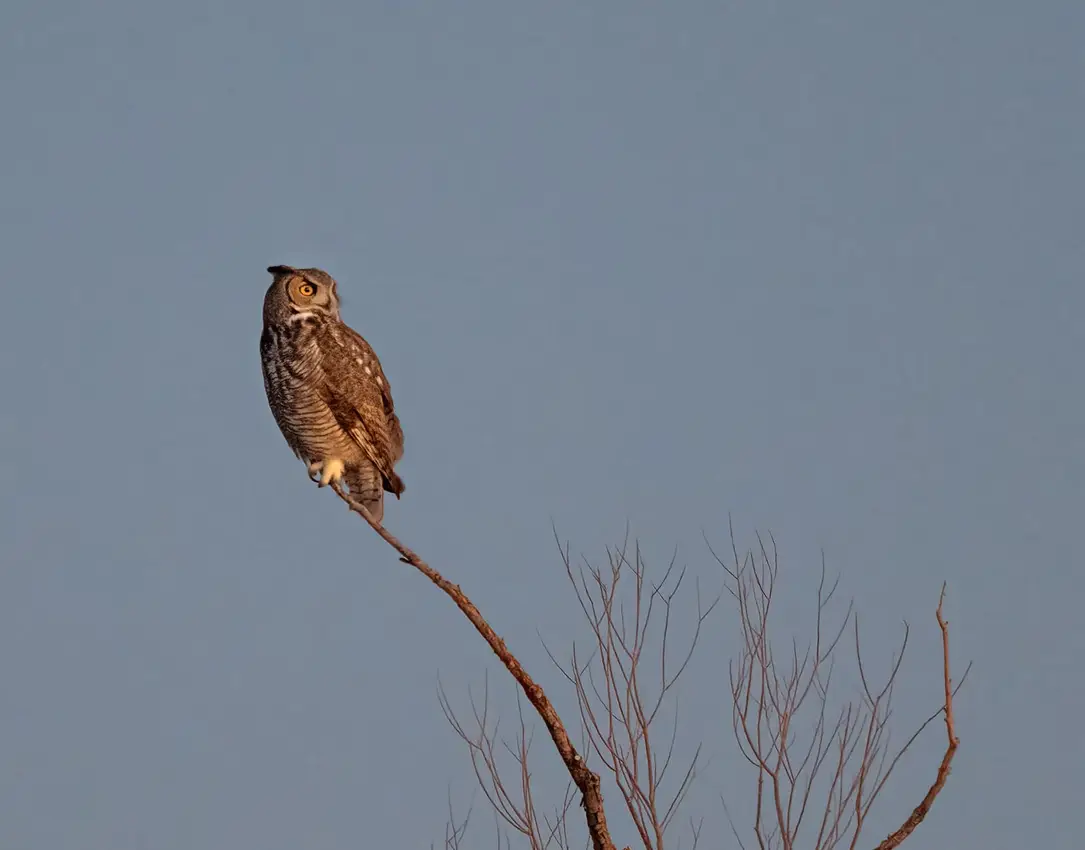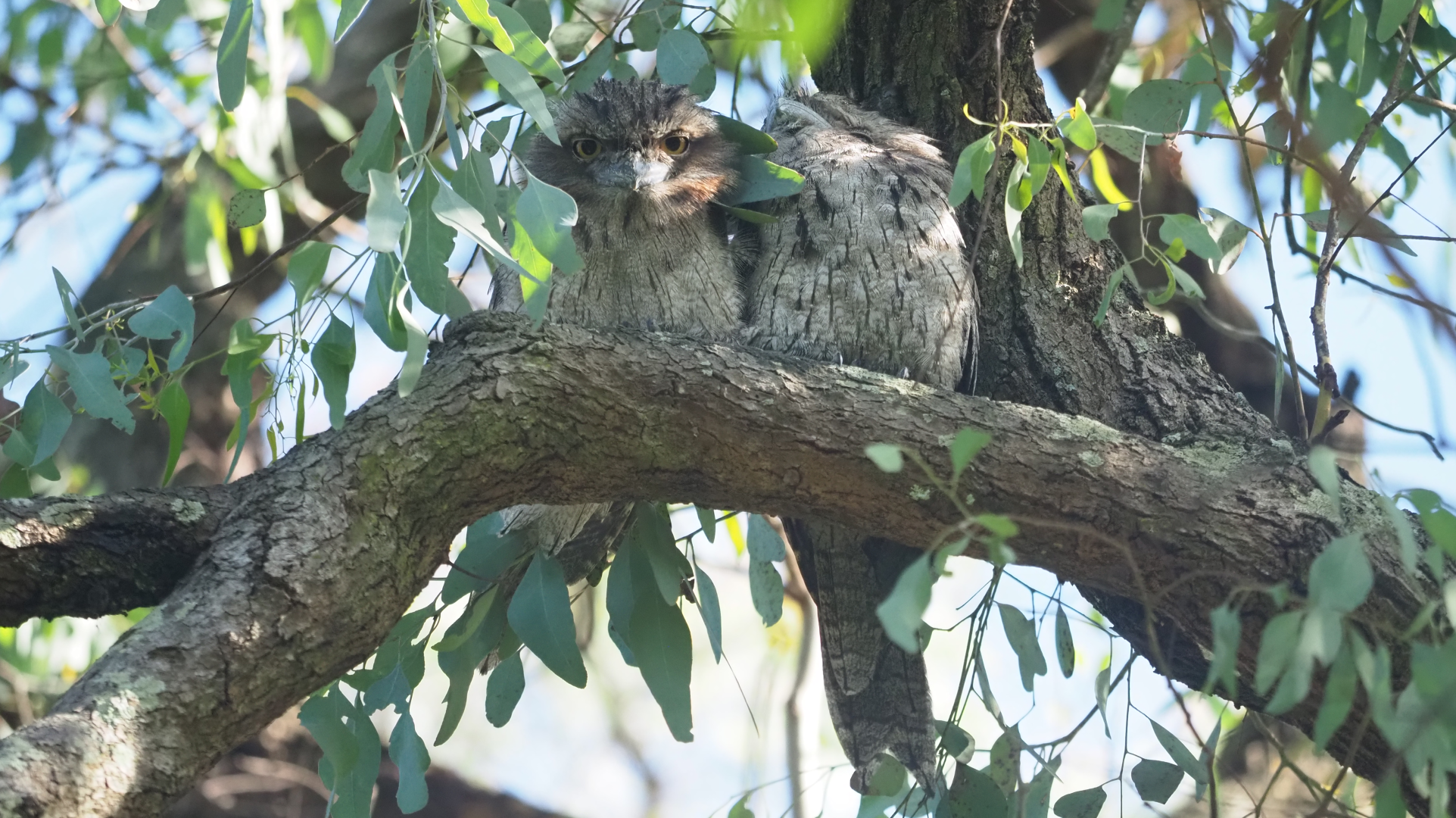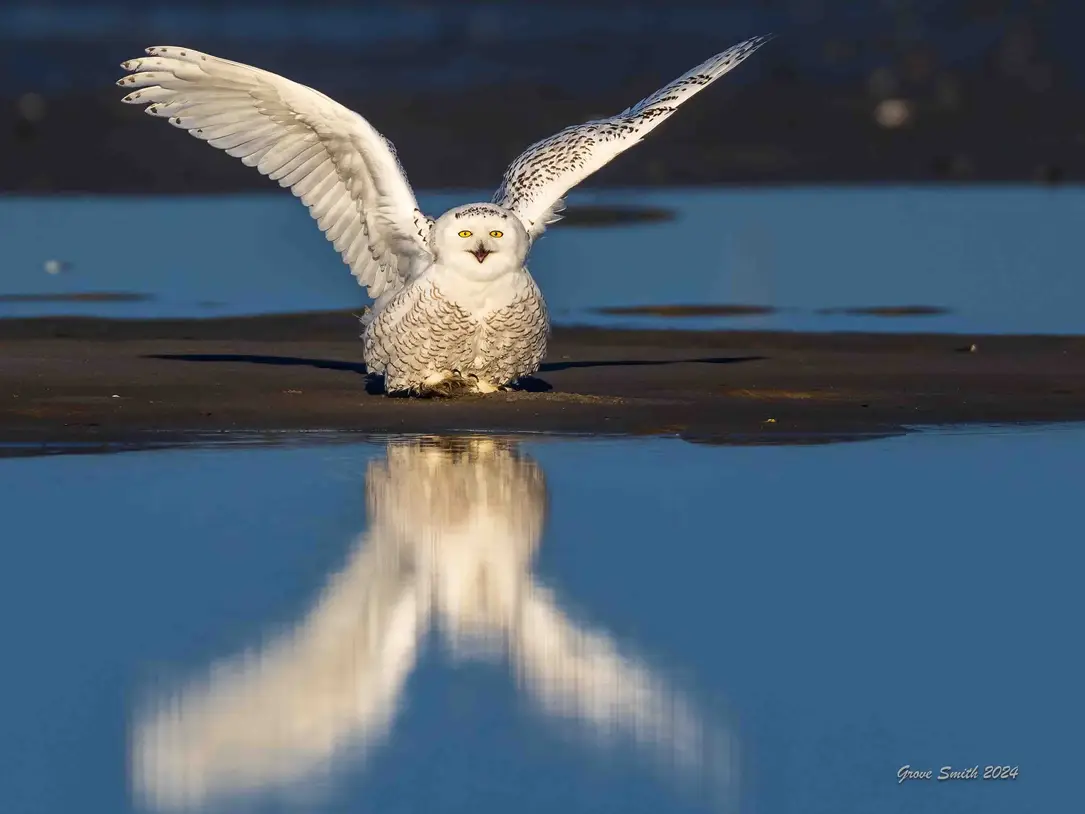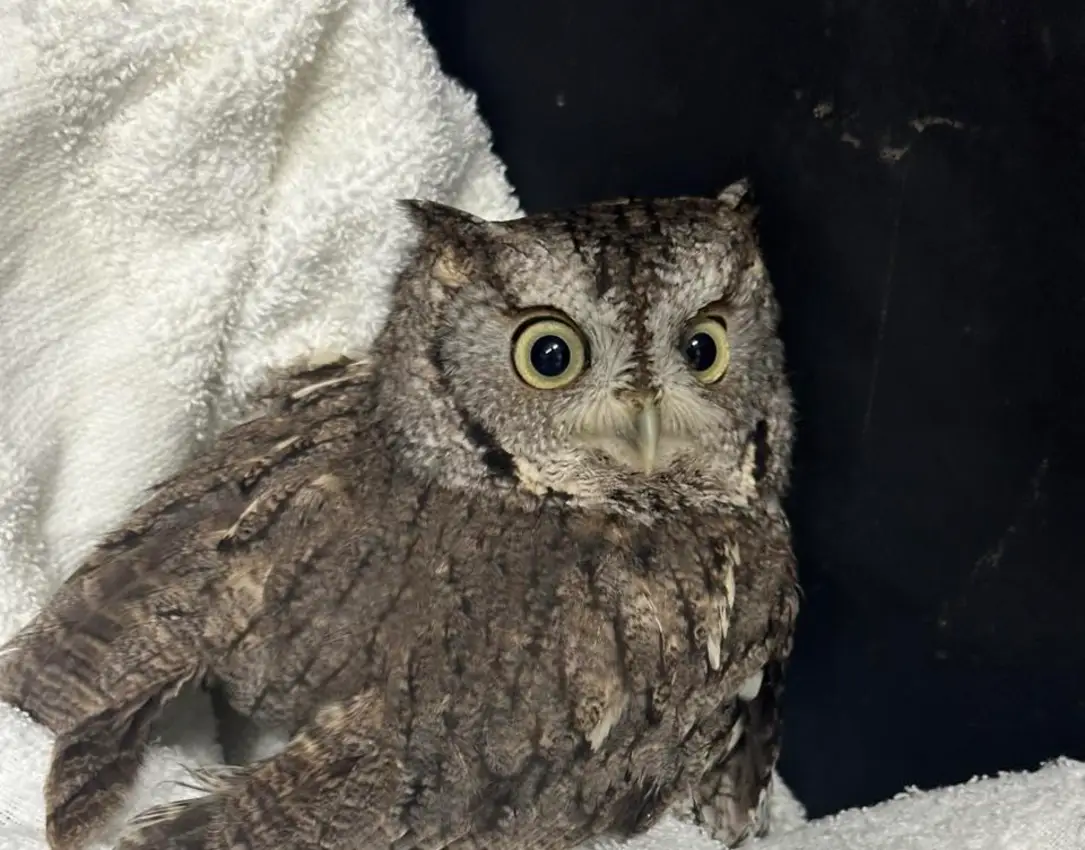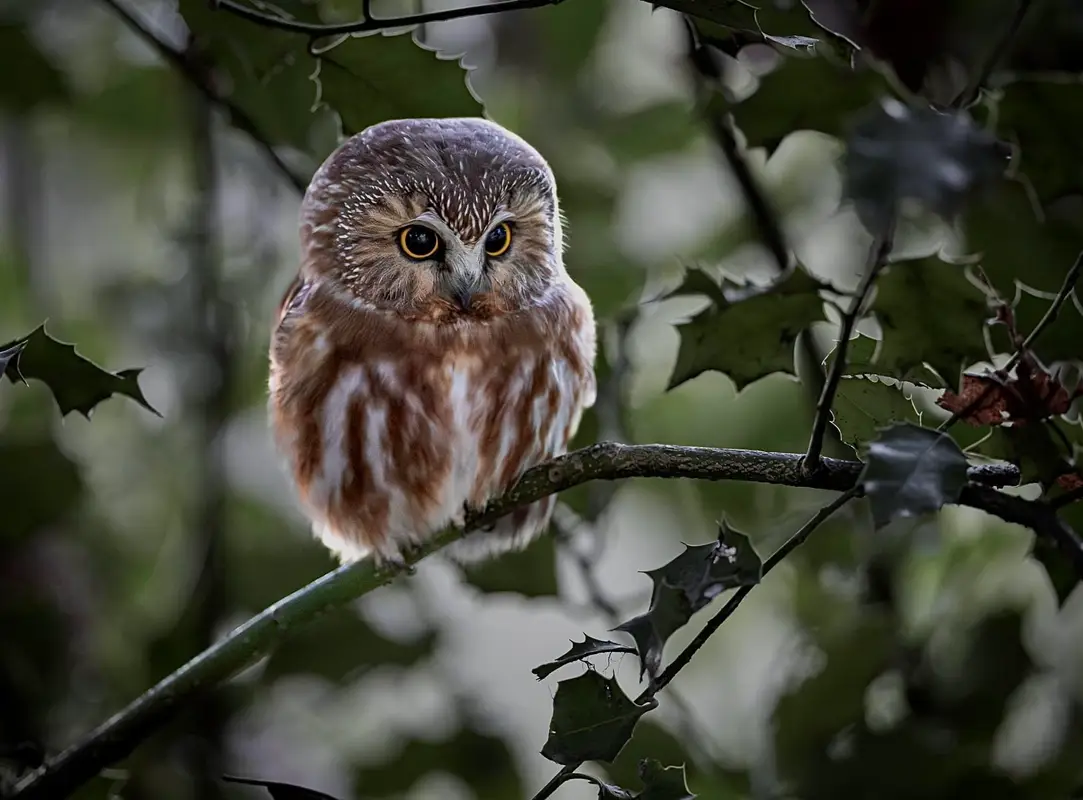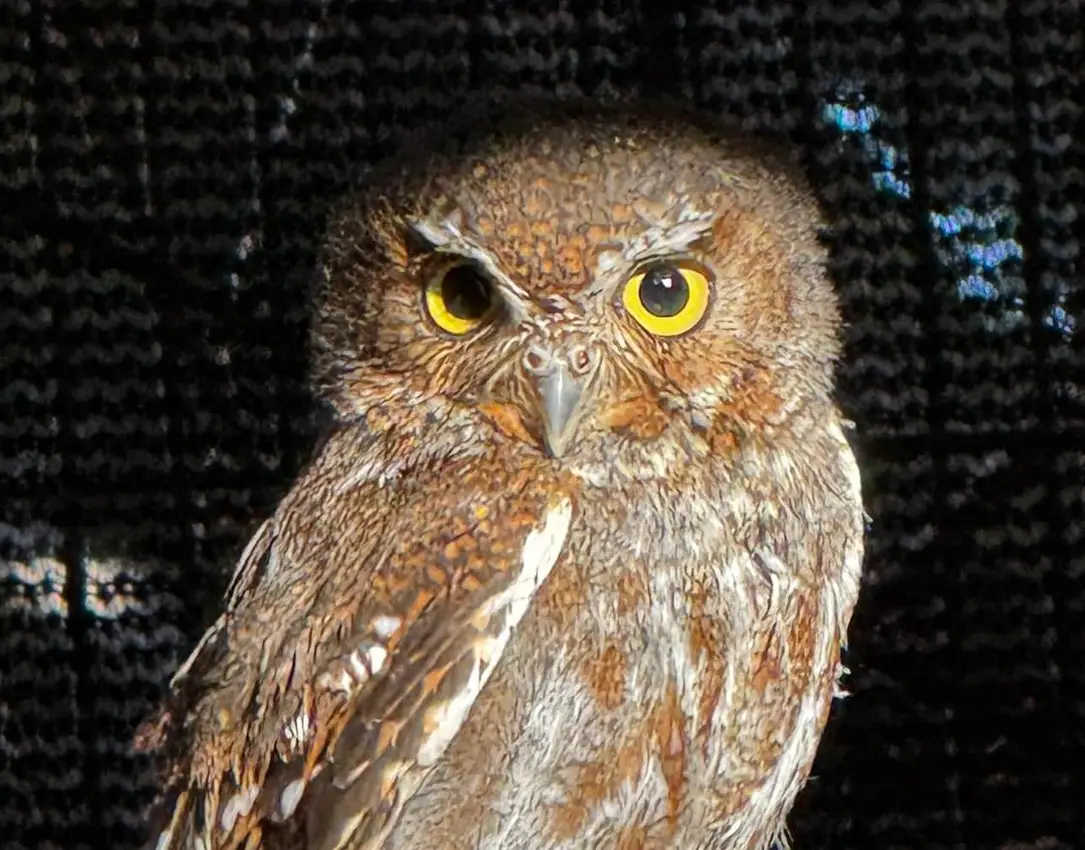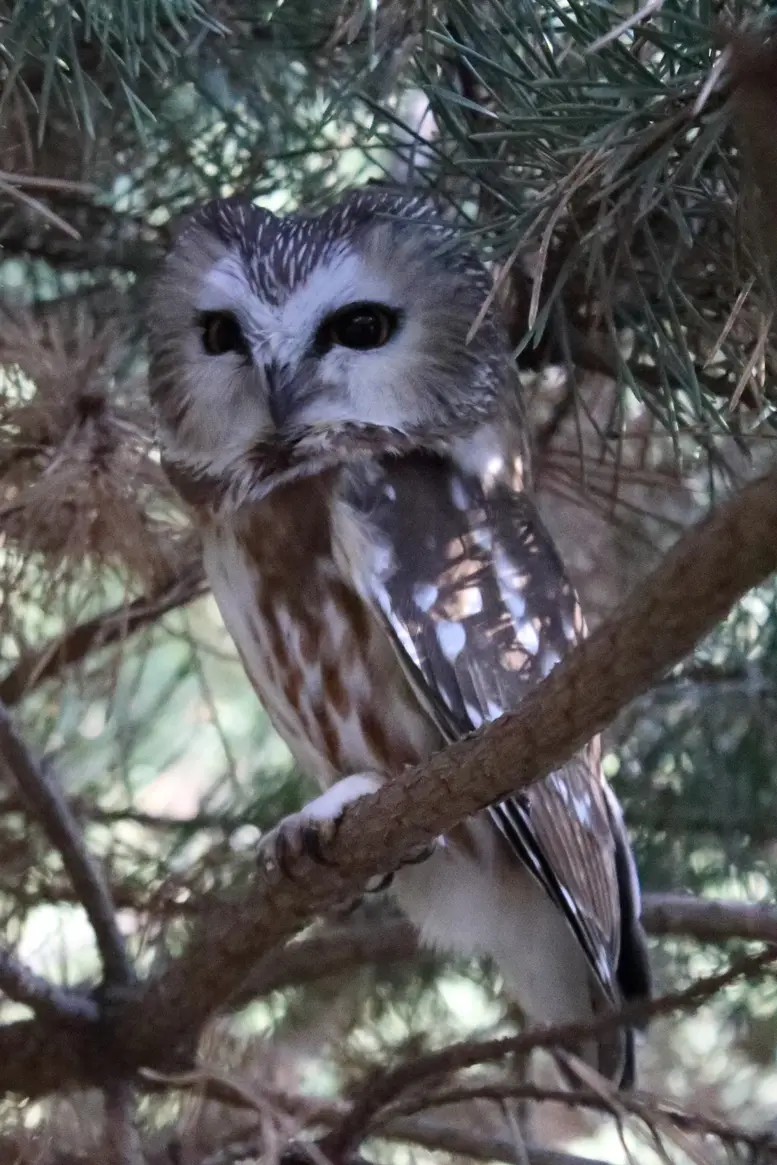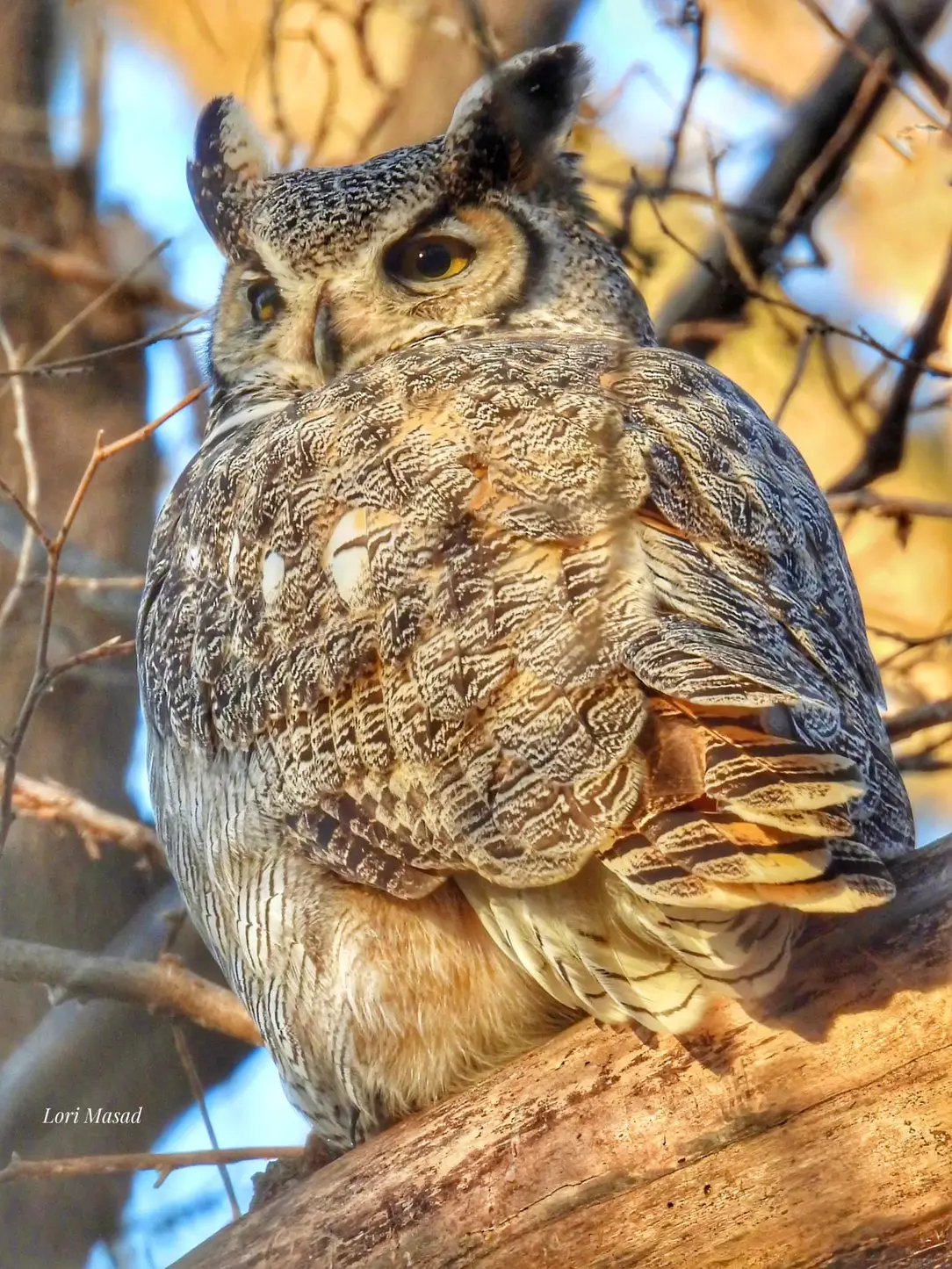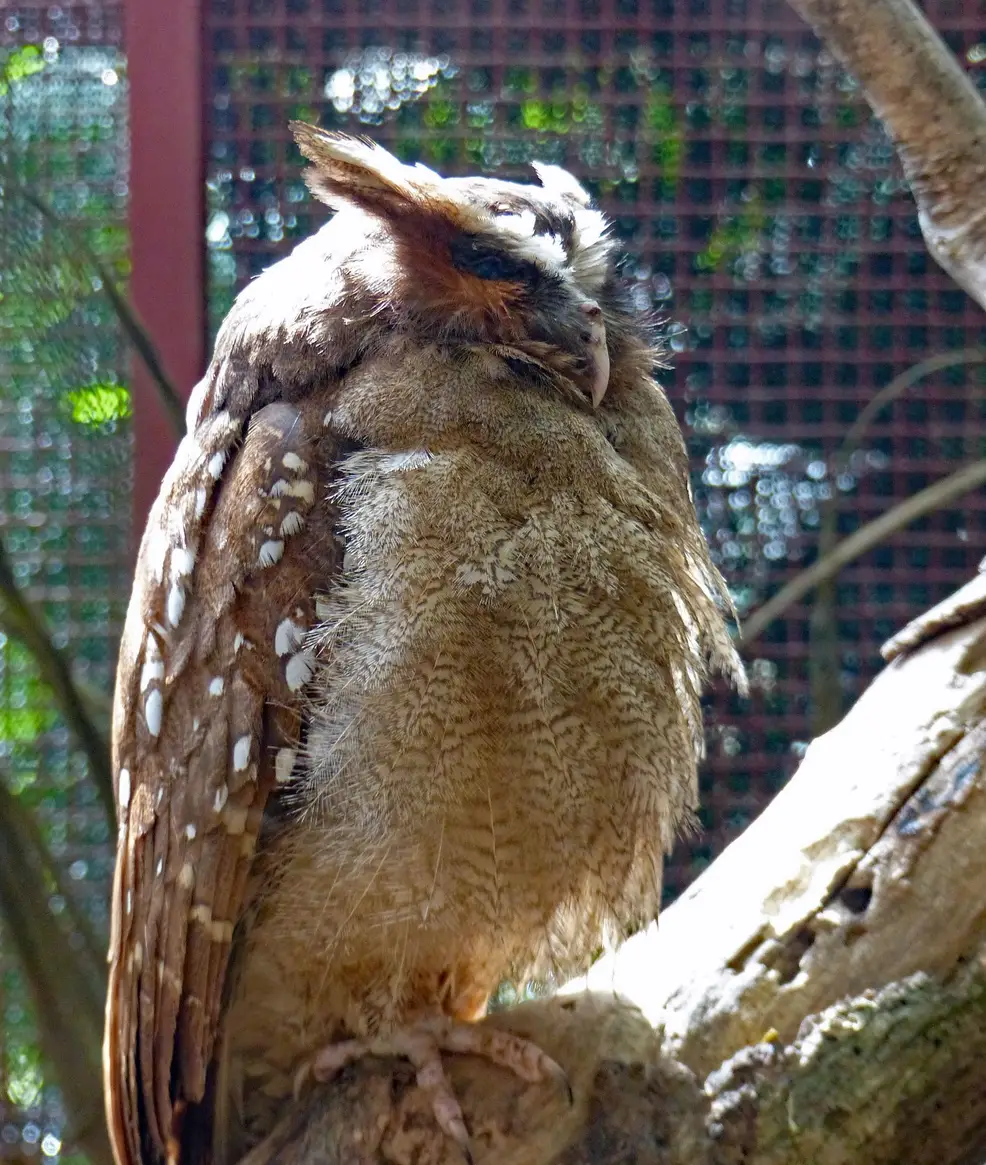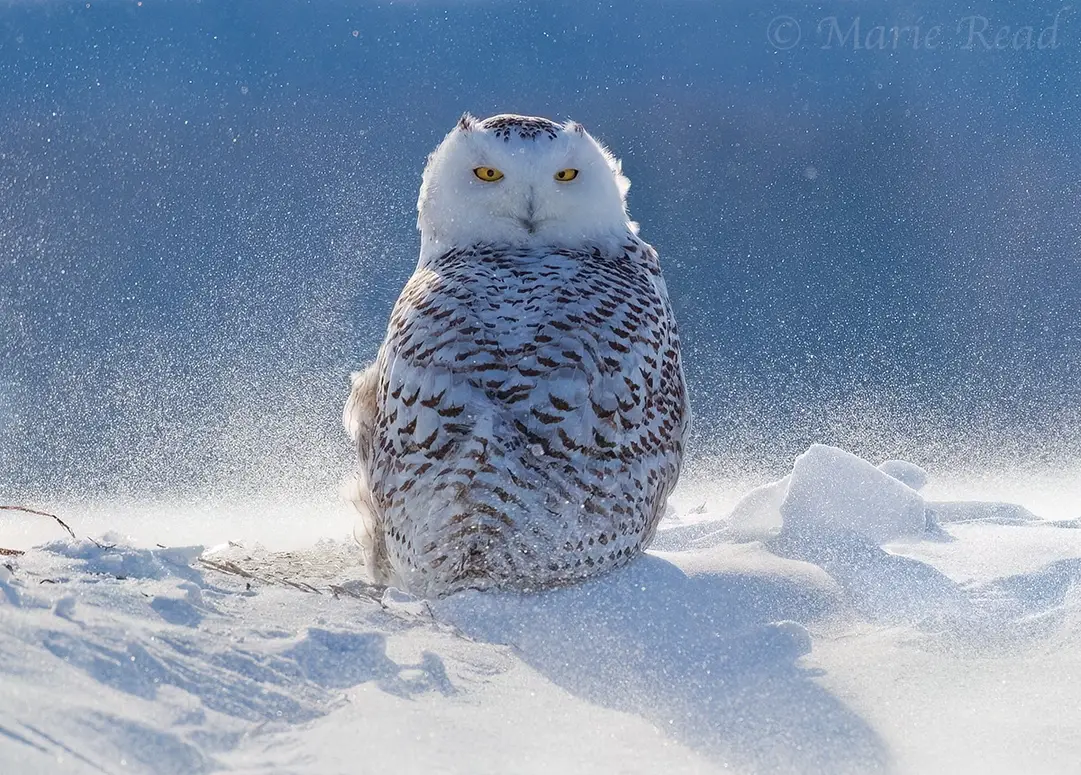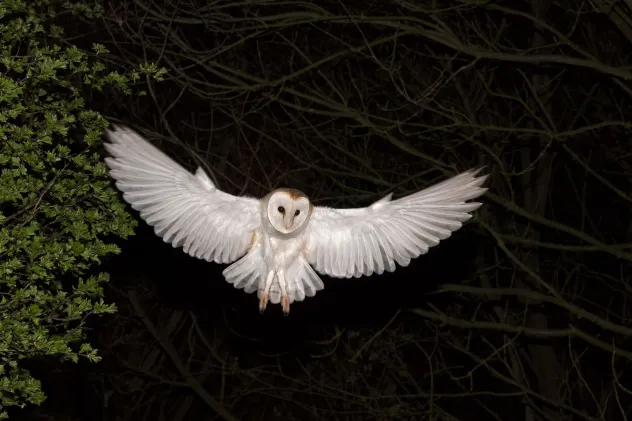A welcome sign of winter are snowy owls appearing along rocky shorelines and in empty fields throughout Wisconsin.
A varying number of these charismatic raptors — with their bright, white plumage, feathered feet and large, yellow eyes — migrate south from their nesting grounds north of the Arctic Circle every year.
“They come all the way from these Arctic islands at the far northern end of Canada, almost to the North Pole,” said Ryan Brady, a conservation biologist with the Wisconsin Department of Natural Resources. “They’re not that common and they move unpredictably. There’s no guarantee of seeing one. So if you do, you’re not going to take it for granted.”
Brady joined WPR’s “The Larry Meiller Show” to talk about the breeding and predation habits of snowy owls, as well as the threats they face during their long journey and time here in Wisconsin.
The following interview has been edited for brevity and clarity.
Larry Meiller: Since at least 2013, you’ve been keeping track of snowy owl sightings in Wisconsin. Why did you start doing this?
Ryan Brady: For two reasons. One was to try to better understand a species that we really don’t know that much about, despite all the allure that they come with.
But more importantly, I was getting a lot of questions. A lot of folks had very high interest in the species. It’s an extremely popular, charismatic bird that the public loves. And being one of the state’s ornithologists, I needed to know what was going on.
So I started keeping track, and the two things have come together quite nicely to produce a dataset that has given us the pattern of snowy owl movements into the state over the last decade or so.
LM: What does your database tell us about the migration of snowy owls?
RB: This time last year, we had only two snowy owls reported in the whole state. As of Dec. 19, we’ve had upwards of 60 owls, which is a lot more than each of the past two years, but a lot less than the last two irruptions of 2021 and 2017.
Certainly there are more owls on the landscape than get reported and counted. With that said, a big white bird like that gets people excited. A lot of photos of them show up on Facebook, Instagram or other social media. So I think the number of owls that go undetected gets lower every year.
LM: I’ve heard that it’s often a low number of lemmings in the Arctic that forces the birds down south. But new research suggests the opposite is probably true.
RB: My money says it could be a little bit of both. In most cases, when we see a lot of snowy owls here in Wisconsin, it’s because the lemming numbers were very high the previous summer in the Arctic.
When there are more lemmings in the Arctic, the snowy owls make lots of babies. A pair might produce five, six, seven or more young owls. When those young owls leave the nest, they disperse across the landscape and move south.
In years when the lemming numbers are low, the owls may not have very good breeding success. Then there’s not a lot to feed the babies, so maybe only one per nest survives.
LM: And of course, they’re not dining on lemmings here.
RB: They have a really varied diet. They will eat small mice, voles and shrews, but they’ll eat a lot of other things. Rabbits are a favorite. So are weasels and muskrats.
Surprisingly to a lot of folks, they eat a lot of waterfowl, things like gulls and ducks and even geese. … They’re very opportunistic, and that allows them to occupy a number of different habitats. You might see them in wild, open landscapes that resemble the tundra. But then you see them a lot in harbors and along the lakeshores.
One of the more popular places for them to hunt is in roadside ditches, which is unfortunate because one of the leading causes of snowy owl mortality here in the winter is collisions with vehicles. When they get here, they might be a little bit emaciated.
Remember, they’ve just flown almost 2,000 miles. Maybe it’s a young bird that doesn’t yet have good hunting skills and wasn’t able to put on the appropriate fat needed to make the journey. Many healthy ones are also struck by vehicles or die in collisions with other infrastructure.
LM: Snowy owls are different from other owls. For example, they’re more likely to be hunting in the daytime.
RB: That’s probably the single factor that makes them as appealing as they are, the fact that they can be diurnal. In general, people love owls. There’s this mysterious quality to them, but you don’t often get to see them. So when you see an owl during the day, it’s really exciting.
Snowy owls are mostly going to be in the more open areas. A barred owl is more of a forest species, so there won’t be much direct competition between the species. Snowy owls will maybe occupy the same fields as short-eared owls. If there’s enough rodents around, they might not get too territorial.
In semi-developed areas, there can be great horned owls around. Between a snowy owl and a great horned owl, that would be a good battle to witness. Unfortunately, I never have. But I imagine there’s some tussles that take place in the darkness of night. Great horned owls are very fierce, so they can probably hold their own and kick a visitor out of their territory. But a snowy owl may have an edge by being on average a pound heavier than a great horned owl.
LM: Tell us about Project Snowstorm.
RB: Project Snowstorm is a collaboration of U.S. researchers and conservationists looking to learn more about the species. … They’re putting devices on the birds, seeing how they move around the states, including their behavior near airports.
But they’re also getting data from the Arctic breeding grounds in a way we’ve never had before. One of the reasons this species is so poorly understood is because they’re breeding way north, above the Arctic Circle, where there are very few people.
LM: Have you personally observed snowy owls in our state?
RB: I have been fortunate to see probably hundreds. I live in the Ashland area on the south shore of Lake Superior. That’s one of the best places in the state to find snowy owls, especially during the irruptive years.
